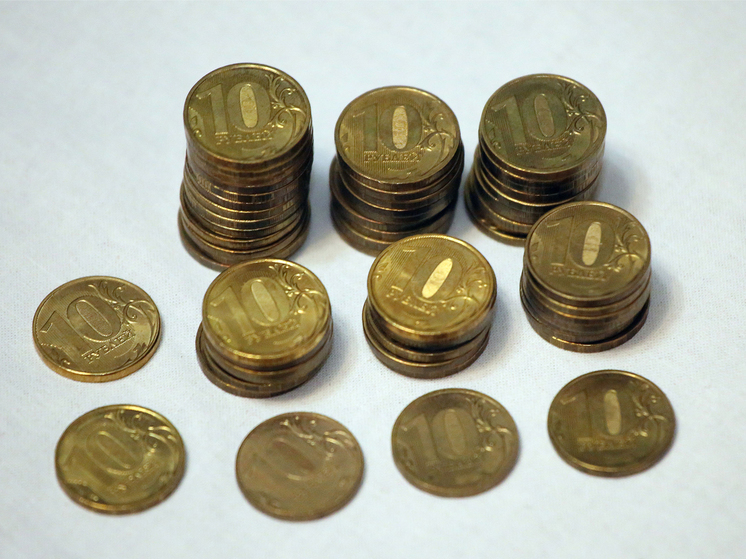Analyst Osadchiy: “There is more harm from restrictions on foreign currency deposits than good”
The dollar and euro have ceased to be the main foreign trade currencies of Russia. This was stated by the Chairman of the Central Bank of the Russian Federation, Elvira Nabiullina, during the presentation of the Bank of Russia report for 2023 to the State Duma. She added that already two thirds of export and import payments are made in national currencies. Meanwhile, the dollar on the Moscow Exchange is gradually growing and is trading closer to the 94 ruble mark. To what extent the domestic currency can weaken and where it is more profitable to hold deposits, Maxim Osadchiy, head of the analytical department of BKF Bank, told MK.

< /p>
— There are no changes on the currency front: the dollar is growing more or less steadily, foreign currency deposits of Russians in domestic banks are declining, and in foreign banks they are growing. The “detoxification” and yuanization of foreign currency deposits continues.
On Wednesday, April 10, when the head of the Central Bank of the Russian Federation spoke with the annual report in the State Duma, the dollar exchange rate broke through the level of 93 rubles and began to storm the heights of 94 rubles. The national currency exchange rate continues to slowly but surely creep towards the “red line” of 100 rubles per dollar.
— With a high probability, the level of 100 will be broken in 2024, as it was previously broken briefly in 2022 and 2023. At the same time, I believe that the extension of the decree of the President of the Russian Federation on the mandatory sale of foreign currency earnings, which expires on April 30, can support the domestic currency.
— In addition to the deterioration of foreign trade conditions, the Ministry of Finance contributes to the devaluation of the ruble, which, in accordance with the budget rule, buys foreign currency (yuan) and gold in the period from April 5 to April 7 May in the amount of 11.2 billion rubles daily. Indexation of social payments also contributes to pressure on the ruble.
“They continue to decline steadily.” Over two years, from March 1, 2022 to March 1, 2024, foreign currency deposits of the population in domestic banks decreased by almost half — by $41 billion, to $44 billion.
At the same time, deposits of Russians in foreign banks continue to grow just as steadily: over these two years they have more than doubled, by $43 billion, to $78 billion. Directly according to Lomonosov: “…if something is added in one place, it will be lost in another.”
Moreover, Russians’ deposits in foreign banks continue to grow steadily, despite all sorts of obstacles erected by foreign bankers in the way of Russians’ money due to fear of secondary sanctions. As in the well-known proverb about annoying people: “You put them in the door, and they go out the window.”
— Alas, that’s exactly it. The main reason for the flow of foreign currency savings from Russian banks to foreign ones is the desire to get away from the restrictions on foreign currency deposits introduced more than two years ago. Moreover, these restrictions apply to deposits in both “toxic” (dollar, euro) and “non-toxic” currencies. I quote the relevant document of the Central Bank: “Citizens can open new foreign currency accounts and deposits, but withdrawals from them, while the temporary procedure for transactions with cash currency is in effect, will be possible in rubles.” Further: “Payments to individuals from foreign currency deposits […] in the event of receipt of foreign currency from September 9, 2022, are made without restrictions at the bank exchange rate.” In other words, payments in rubles are made at the bank’s arbitrary rate! The Central Bank's press release dated March 7 said: “The Bank of Russia has extended for another six months, until September 9, 2024, restrictions on the withdrawal of cash foreign currency.”
— Indeed, in February, household deposits in Russian banks in non-toxic currencies (mainly yuan) increased by $1.5 billion, to $24.7 billion. So, high rates and increased liquidity of the yuan contribute to the popularity of this ersatz currency (the yuan is not freely convertible currency) on the Russian market. Economists call this phenomenon the “second best” effect.
Competition in the market for deposits in Chinese currency is intensifying. Russian banks are offering increasingly higher rates on deposits in yuan, rates reaching up to 5% per annum, while the corresponding key rate in China (China Loan Prime Rate) is 3.45% per annum.
However, In general, foreign currency deposits in Russian banks are declining — the influx of deposits in yuan does not keep pace with the outflow of deposits in dollars and euros.
— The process of accumulating cash currency is not very active. Over two years, the population's cash currency reserves increased by only $4.4 billion — from $92.1 billion as of March 1, 2022 to $96.5 billion as of March 1, 2024.
The yuan is confidently displacing dollars and euros in the deposit market, but in the cash market, Russians continue to give preference to “first-class” currencies—the dollar and the euro. In March, these two currencies accounted for 81% of the volume of household purchases. So Russians still believe in the cash dollar more than in the cash yuan.
— In my opinion, it’s time. Judging by the rate of flow of foreign currency funds of Russians from domestic banks to foreign ones, the harm from restrictions on foreign currency deposits turns out to be greater than the benefits. Moreover, there are not so many household deposits in “toxic” currencies left in Russian banks — as of March 1, only $24.7 billion. At the first stage, it would be worth at least removing “non-toxic” currencies from restrictions. Let's hope that this restriction will not be extended beyond September 9, 2024.


